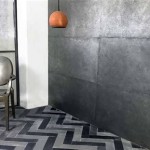How To Insulate Interior Cinder Block Walls
Insulating interior cinder block walls offers significant benefits, including improved energy efficiency, reduced noise levels, and enhanced interior comfort. Several insulation methods exist, each with its advantages and disadvantages. Choosing the right approach depends on factors such as budget, desired R-value, and the wall's intended use.
Key Considerations Before Starting
Before embarking on an insulation project, several factors warrant consideration:
- Moisture Management: Cinder block is porous and can absorb moisture. Addressing any existing moisture problems before insulating is crucial to preventing mold and mildew growth.
- R-Value Requirements: The recommended R-value varies depending on climate. Colder climates necessitate higher R-values for optimal energy efficiency.
- Budget: Different insulation materials and installation methods vary in cost. Establish a budget early in the planning process.
Method 1: Rigid Foam Board Insulation
Rigid foam board insulation, available in expanded polystyrene (EPS), extruded polystyrene (XPS), and polyisocyanurate (polyiso), offers high R-value per inch. It's a popular choice for cinder block walls due to its ease of installation and moisture resistance.
Installation Steps for Rigid Foam Board
Installing rigid foam board insulation involves the following steps:
- Prepare the Wall: Clean the cinder block wall thoroughly, removing any loose debris or protrusions.
- Apply Adhesive: Apply a construction adhesive designed for foam board to the back of the insulation boards.
- Position and Secure the Boards: Place the boards tightly against the wall, ensuring a snug fit. Mechanically fasten the boards to the wall using appropriate fasteners, such as concrete screws or tapcons.
- Seal the Seams: Seal all seams and gaps between boards using a compatible sealant or foam tape to prevent air leaks.
- Finish the Wall: Cover the insulation with drywall, paneling, or another desired finish material.
Method 2: Spray Foam Insulation
Spray foam insulation, available in open-cell and closed-cell varieties, offers excellent air sealing capabilities and high R-values. Closed-cell spray foam also provides a moisture barrier.
Applying Spray Foam Insulation
Applying spray foam insulation is best left to professionals due to the specialized equipment required. The general process involves:
- Surface Preparation: The wall should be clean and free of debris.
- Spray Application: The foam is sprayed directly onto the cinder block wall, filling all cracks and crevices.
- Curing Time: The foam expands and cures quickly, creating an airtight and insulating layer.
- Trimming Excess Foam: Any excess foam is trimmed to create a flush surface.
- Finishing: The sprayed foam can be covered with drywall or another finish material.
Method 3: Insulated Furring Strips
Insulated furring strips combine the benefits of creating a thermal break with the ease of installing faced batt insulation.
Installing Insulation with Furring Strips
This method involves creating a cavity between the cinder block wall and the finished wall:
- Attach Furring Strips: Secure vertical furring strips made of wood or metal to the cinder block wall using appropriate fasteners.
- Install Batt Insulation: Place faced batt insulation between the furring strips, ensuring a snug fit.
- Install Vapor Barrier (If Necessary): In colder climates, a vapor barrier may be necessary over the insulation.
- Install Finish Wall: Attach drywall or another finish material to the furring strips.
Method 4: Mineral Wool Insulation (Rockwool or Slagwool)
Mineral wool insulation, often in batt form, offers good fire resistance and sound dampening qualities. While it’s less moisture-resistant than rigid foam board, applying a vapor barrier can mitigate this issue.
Installing Mineral Wool Insulation
The installation process for mineral wool batts is similar to that of fiberglass batts:
- Prepare the Wall: Clean the wall and address any moisture issues.
- Install Furring Strips (Optional): Furring strips can be used to create a cavity for the insulation.
- Place Insulation: Fit the mineral wool batts snugly between the studs or within the cavity created by furring strips.
- Cover with Vapor Barrier (Recommended): A vapor barrier is highly recommended with mineral wool to prevent moisture absorption.
- Install Finish Wall: Install drywall or another finish material over the insulation.
Choosing the Right Insulation Method
The best insulation method depends on individual project needs. Consider factors like budget, climate, desired R-value, and the level of DIY experience when selecting an approach. Consulting with a building professional can provide valuable guidance in choosing the most appropriate method for a specific situation.

Electrical How Can I Install R Max Insulation On The Interior Side Of A Cinderblock Wall Home Improvement Stack Exchange

Insulating Old Cinder Block Walls Cmu The Right Way

How To Insulate A Basement Wall Greenbuildingadvisor

Breaking The Mould Part I Passivehouseplus Ie

Insulating Conrete Masonry Walls Cmha

Expol Masonry Wall Insulation

How To Insulate Your Basement S Concrete Walls The Seattle Times
Concrete Block Wall Insulation Attach Furring Foam Board To Diy Home Improvement Forum

Insulating Conrete Masonry Walls Cmha

Insulation Is It Okay To Insulate A Basement Wall When An Interior French Drain Installed Home Improvement Stack Exchange
Related Posts








